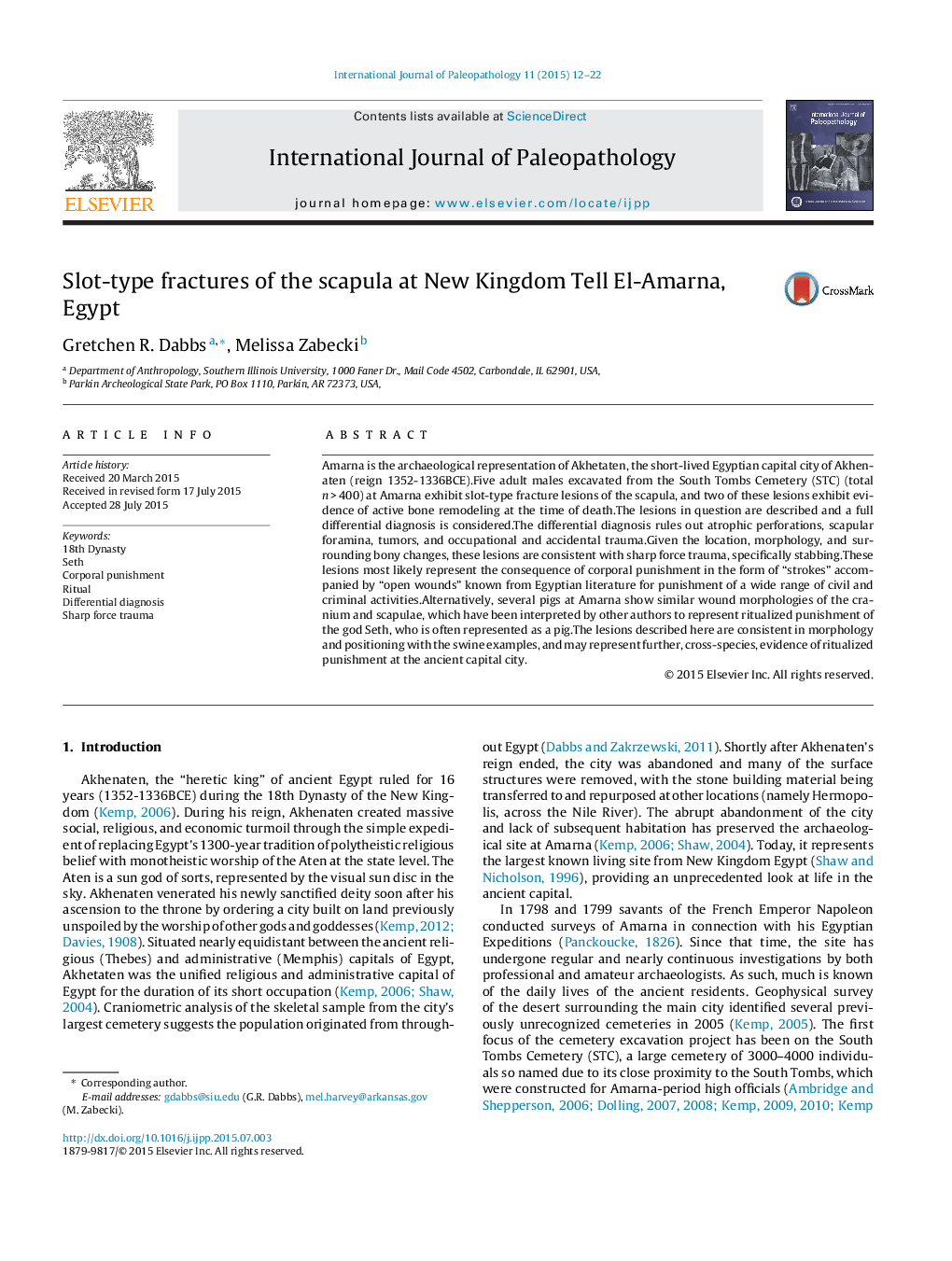| Article ID | Journal | Published Year | Pages | File Type |
|---|---|---|---|---|
| 6554839 | International Journal of Paleopathology | 2015 | 11 Pages |
Abstract
Amarna is the archaeological representation of Akhetaten, the short-lived Egyptian capital city of Akhenaten (reign 1352-1336BCE).Five adult males excavated from the South Tombs Cemetery (STC) (total n > 400) at Amarna exhibit slot-type fracture lesions of the scapula, and two of these lesions exhibit evidence of active bone remodeling at the time of death.The lesions in question are described and a full differential diagnosis is considered.The differential diagnosis rules out atrophic perforations, scapular foramina, tumors, and occupational and accidental trauma.Given the location, morphology, and surrounding bony changes, these lesions are consistent with sharp force trauma, specifically stabbing.These lesions most likely represent the consequence of corporal punishment in the form of “strokes” accompanied by “open wounds” known from Egyptian literature for punishment of a wide range of civil and criminal activities.Alternatively, several pigs at Amarna show similar wound morphologies of the cranium and scapulae, which have been interpreted by other authors to represent ritualized punishment of the god Seth, who is often represented as a pig.The lesions described here are consistent in morphology and positioning with the swine examples, and may represent further, cross-species, evidence of ritualized punishment at the ancient capital city.
Related Topics
Life Sciences
Biochemistry, Genetics and Molecular Biology
Physiology
Authors
Gretchen R. Dabbs, Melissa Zabecki,
